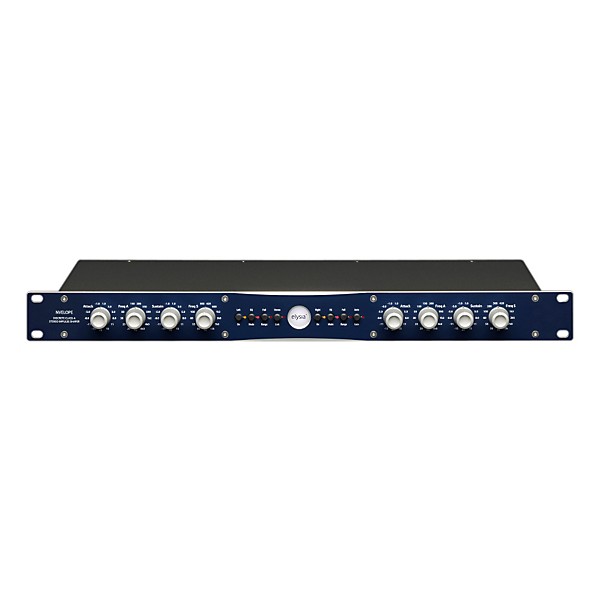Gear SpecialistBundlingMusician
Call 866‑388‑4445 or chat for exclusive deals, plus save on orders of $199+
Elysia Nvelope Stereo Impulse Shaper Module with Dual EQ Capabilities
(0)|Q&A|Item #:1366901762886 POS #:109144014
6-month special financing^ + $149 back in Rewards** Limited time Learn More
Lease-To-Own Purchase OptionsLearn more
Protect your gearLearn more
Cover drops, spills or cracks with Pro Coverage
Save on orders $199+ and get expert advice from a Gear Adviser
Need Help?

Description
The nvelope is a powerful audio processor capable of making subtle or drastic changes to a sound by providing control over its attack and sustain characteristics. This is extremely useful for reshaping all sorts of individual tones, and is a wonderful tool in any mixing situation as well.
The nvelope operates independently of the specific level of a signal, and (unlike with compressors) you do not have to spend a lot of time trying to balance a set of complex controls to quickly get the results you seek.
With its unique Dual Band mode, the nvelope gives you enhanced control over processing, and can easily handle complex program material. Additionally, its dynamics sections can be bypassed, allowing it to function as a flexible high/low shelf EQ.
The nvelope operates independently of the specific level of a signal, and (unlike with compressors) you do not have to spend a lot of time trying to balance a set of complex controls to quickly get the results you seek.
With its unique Dual Band mode, the nvelope gives you enhanced control over processing, and can easily handle complex program material. Additionally, its dynamics sections can be bypassed, allowing it to function as a flexible high/low shelf EQ.
Features
- Discrete Class-A Topology - As a true elysia specialty, the audio path of the nvelope is completely based on discrete circuitry and does not use any integrated circuits at all.
- Full Range Mode - In Full Range mode, the attack and sustain intensity of a signal can be raised or reduced fast and efficiently with just two controllers.
- Dual Band Mode - This mode functions basically the same as Full Range, but it provides more tweakability by assigning the attack and sustain controls to individual frequency selectors.
- EQ Mode - The nvelope can mutate into a two band equalizer with a high/low shelf characteristic, and even here the channel link for processing stereo material can be activated.
- Mixed Mode - When Stereo Link mode is not active, the two individual channels can be used as completely different processors at the same time.
- Dual Mono/Stereo Link for ultimate flexibility, the nvelope offers true dual mono and linked stereo operation as well “ no matter if you are using it in Full Range, Dual Band or EQ mode.
- Auto Gain - Should distortion or huge jumps in level occur as an unwanted side effect of the attack processing, the Auto Gain function will compensate and get the level right.
- Stepped Potentiometers - The frequency potentiometers have 41 steps for an easy recall, while the gain pots have a center detent for finding their neutral position at once.
Specs
- Frequency response: <10 Hz - 400 kHz (-3.0 dB)
- THD+N:
- @ 0 dBu, 20 Hz - 22 kHz - 0.006 %
- @ +10 dBu, 20 Hz - 22 kHz - 0.01 %
- Noise floor A-weighted:
- 20¯Hz - 20¯kHz (Full Range, EQ) - -90.0 dBu
- 20¯Hz - 20¯kHz (Dual Band) - -87.0 dBu
- Dynamic range:
- 20 Hz - 22 kHz
- 112 dB
- Maximum level:
- Input - +21 dBu
- Output - +21 dBu
- Impedance:
- Input - 10 kOhm
- Output - 68 Ohm





